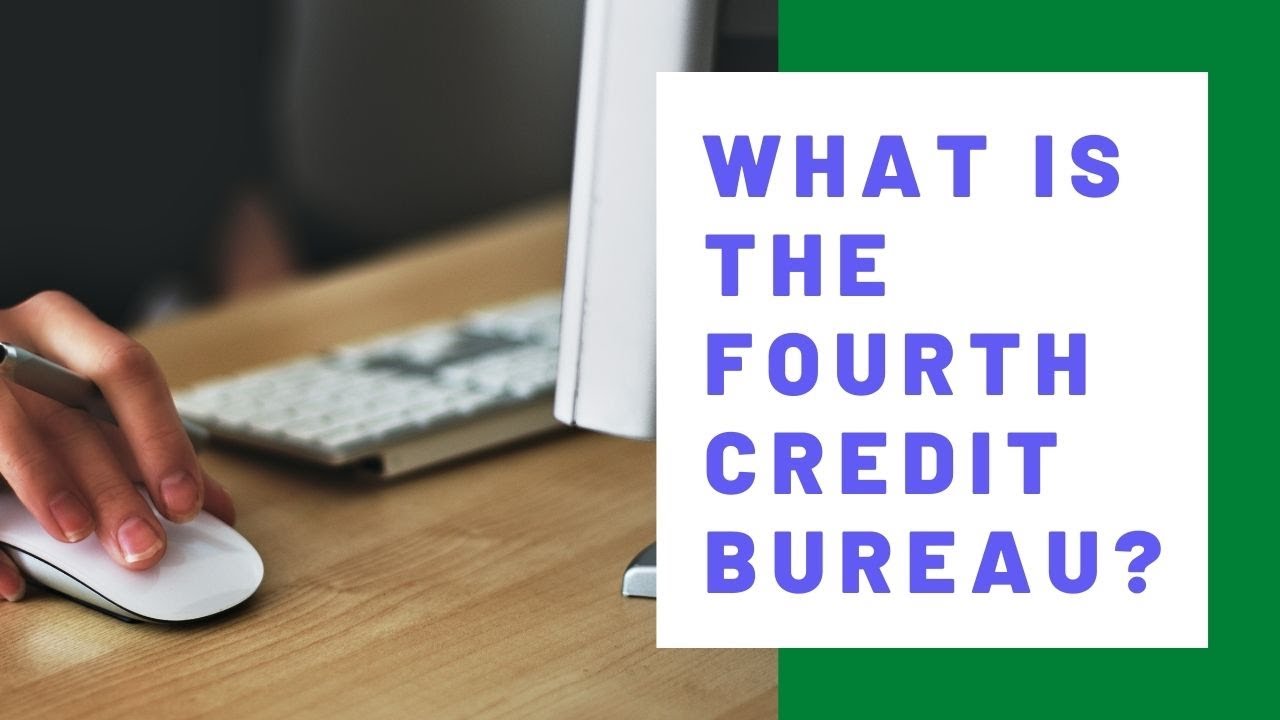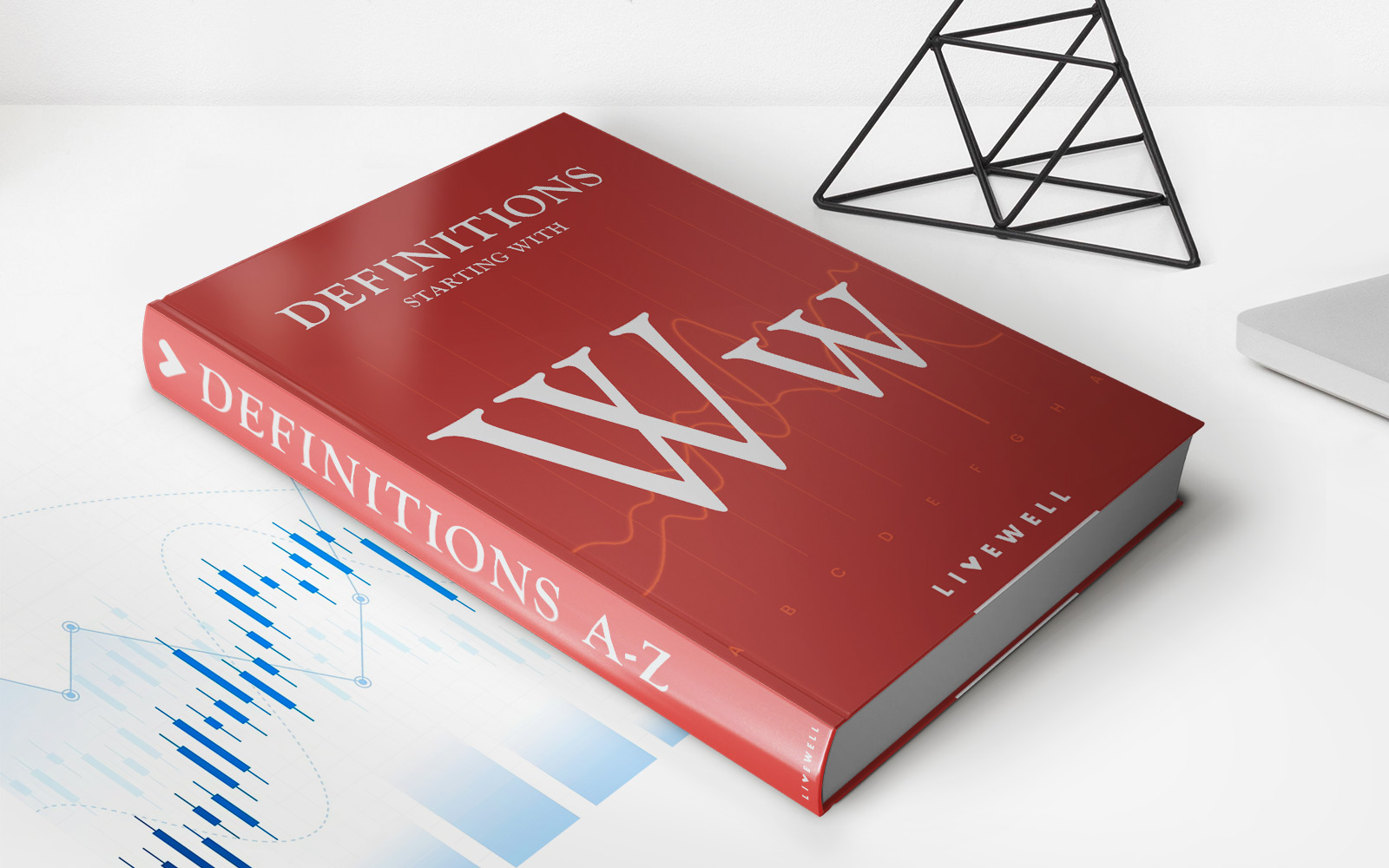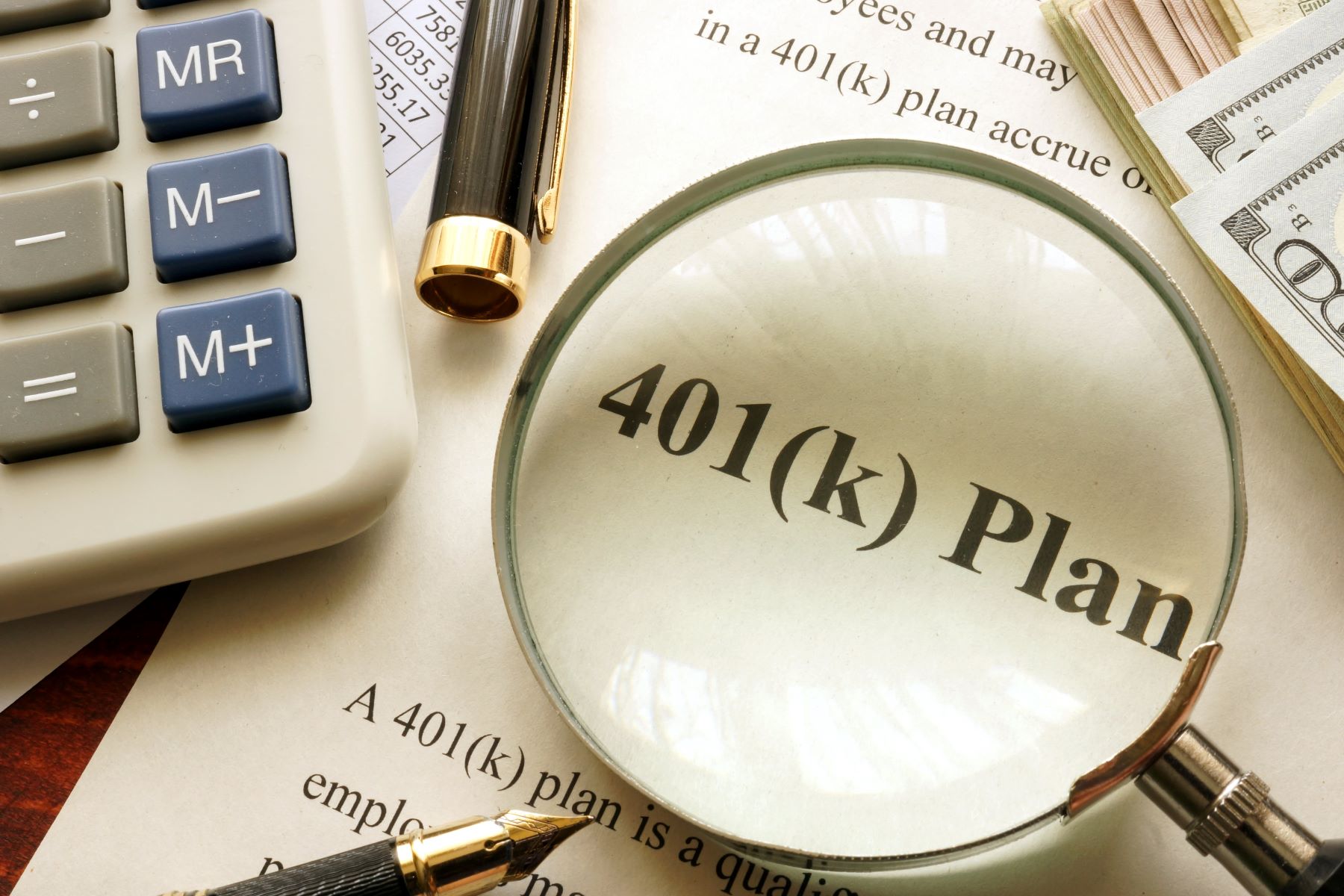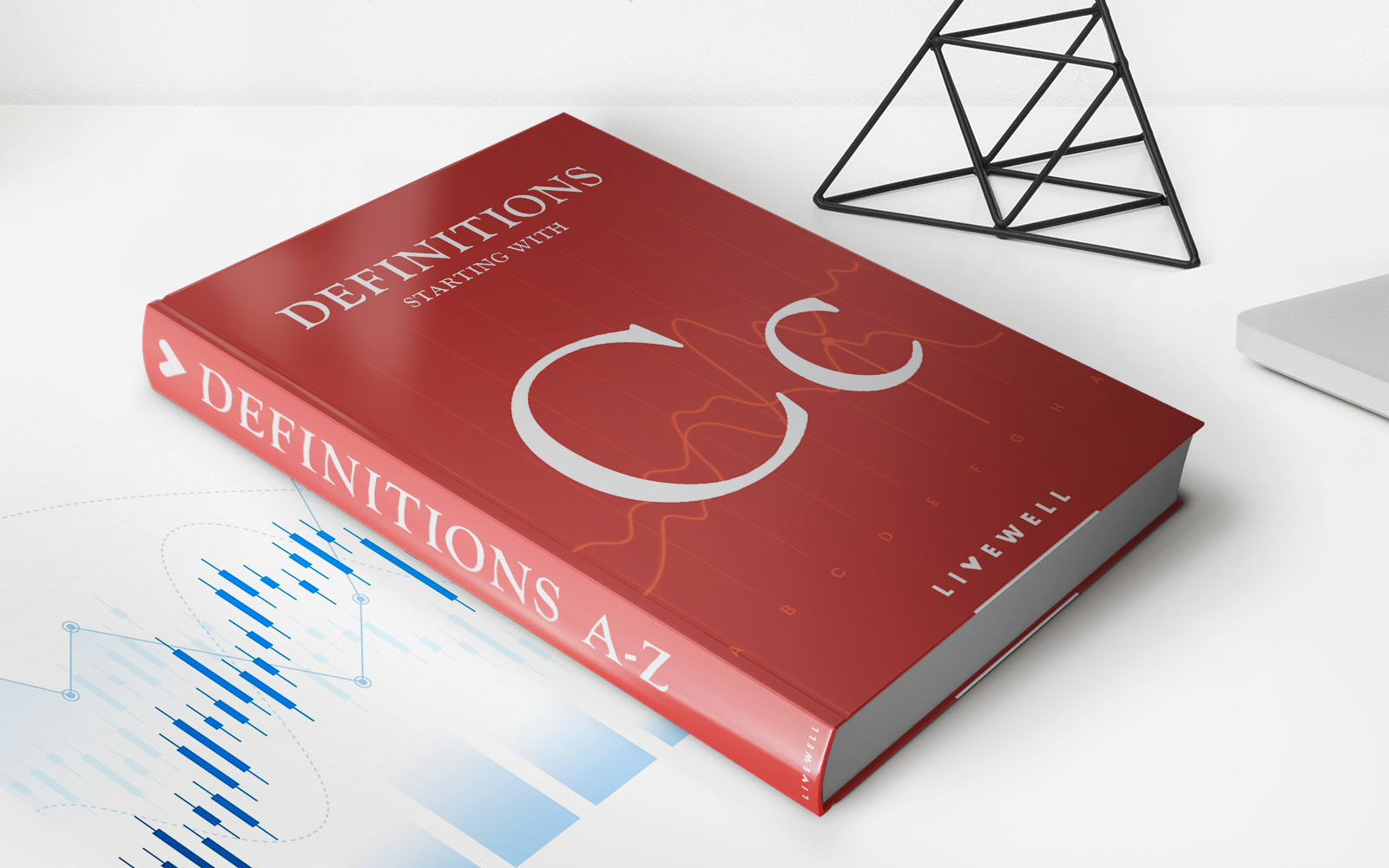

Finance
What Is The 4th Credit Bureau
Published: January 4, 2024
Discover the fourth credit bureau and its impact on the finance industry. Enhance your understanding of credit reporting with this insightful guide.
(Many of the links in this article redirect to a specific reviewed product. Your purchase of these products through affiliate links helps to generate commission for LiveWell, at no extra cost. Learn more)
Table of Contents
Introduction
In today’s modern financial landscape, credit plays a vital role in our everyday lives. Whether it’s applying for a loan, renting an apartment, or even securing a job, having a good credit history can make all the difference. And at the heart of assessing creditworthiness lies a group of institutions known as credit bureaus. These organizations collect and analyze financial data to provide credit reports and scores to lenders, landlords, and employers.
Traditionally, there have been three major credit bureaus dominating the industry – Equifax, Experian, and TransUnion. These bureaus have been extensively relied upon for determining creditworthiness and managing risk. However, with the growing demand for more comprehensive credit information and innovative financial services, a new player has emerged – the 4th credit bureau.
So, what exactly is this 4th credit bureau, and what sets it apart from the traditional players? In this article, we will delve into the world of credit bureaus, explore the concept of the 4th credit bureau, and examine its purpose, functions, and the services it offers.
Definition of Credit Bureaus
Credit bureaus, also known as credit reporting agencies, are institutions that collect and maintain financial information about individuals and businesses. Their primary purpose is to gather data from various sources, such as banks, credit card companies, and other lenders, and compile it into a comprehensive credit report.
These credit reports contain information about an individual’s borrowing history, payment patterns, outstanding debts, credit limits, and other relevant financial data. The credit bureaus then use this information to calculate credit scores, which are numerical representations of an individual’s creditworthiness.
Credit bureaus play a critical role in the financial ecosystem by providing lenders, landlords, employers, and other authorized entities with valuable insights to assess the risk associated with extending credit or entering into a business relationship. These institutions act as a bridge between individuals and businesses, enabling them to make informed decisions based on creditworthiness.
It’s important to note that credit bureaus collect and maintain both positive and negative credit information. On the positive side, they track timely payments, responsible borrowing, and overall credit management. Conversely, they also monitor late payments, defaults, bankruptcies, and other negative credit events. This comprehensive view of an individual’s financial history helps in evaluating creditworthiness and risk assessment.
The Three Traditional Credit Bureaus
The credit industry has long been dominated by three major credit bureaus: Equifax, Experian, and TransUnion. These established institutions have been around for decades, building extensive databases and establishing themselves as trusted sources of credit information.
Equifax, founded in 1899, is one of the oldest and most recognized credit bureaus in the world. It operates in 24 countries and has over 800 million consumers and 88 million businesses in its database. Equifax collects and maintains a wide range of consumer credit information, including credit history, public records, and personal identification details.
Experian, founded in 1996, is another prominent player in the credit reporting industry. Headquartered in Ireland, Experian operates in 39 countries and serves more than 50,000 clients worldwide. It focuses on providing credit reports, credit scoring, and other related services to businesses and consumers.
TransUnion, founded in 1968, is a global credit information and risk management company. With operations in 30 countries and over 45,000 businesses as clients, TransUnion provides credit reports, credit monitoring, and fraud prevention services. It collects and analyzes data on personal and business credit history, public records, and identity verification.
These three traditional credit bureaus have established themselves as reliable sources of credit information and are widely used by lenders, landlords, and employers to assess creditworthiness. They each have their own proprietary algorithms and scoring models to calculate credit scores, providing a snapshot of an individual’s creditworthiness based on their data.
While the traditional credit bureaus have been instrumental in shaping the credit industry, the emergence of the 4th credit bureau has brought new dynamics and possibilities to the field.
What is the 4th Credit Bureau?
The 4th credit bureau refers to a newer player in the credit reporting industry that has emerged alongside the traditional credit bureaus. Unlike the well-established Equifax, Experian, and TransUnion, the 4th credit bureau is a more recent addition and offers a unique approach to credit reporting and analysis.
The exact identity of the 4th credit bureau may vary depending on the context and region. It could represent a new credit reporting agency that has gained prominence and recognition in the industry, or it could refer to alternative credit data providers that offer non-traditional credit scoring models.
What sets the 4th credit bureau apart is its ability to gather and analyze non-traditional data sources to assess creditworthiness. While the traditional credit bureaus primarily rely on financial information from banks and lenders, the 4th credit bureau may tap into alternative data sources such as utility payments, rental history, employment records, and even social media data.
This alternative data allows the 4th credit bureau to provide a more holistic view of an individual’s creditworthiness, especially for individuals with limited credit history or no traditional credit profiles. By considering a wider range of information, the 4th credit bureau aims to provide a fair and accurate assessment of an individual’s creditworthiness.
The 4th credit bureau also often emphasizes the importance of financial inclusion. It aims to help individuals who have been underserved by traditional credit reporting systems, such as those with thin credit files, immigrants, or individuals who have experienced financial setbacks. By incorporating alternative data, the 4th credit bureau aims to provide access to credit for these individuals and help them establish or rebuild their creditworthiness.
It’s important to note that the 4th credit bureau does not replace the traditional bureaus but rather supplements them by offering a different perspective on creditworthiness. Its goal is to provide a more comprehensive and inclusive credit evaluation to support more accurate lending decisions and financial opportunities.
Purpose and Functions of the 4th Credit Bureau
The 4th credit bureau serves a distinct purpose and carries out several important functions that set it apart from the traditional credit bureaus. While the exact scope and features may vary depending on the specific 4th credit bureau, here are some common purposes and functions:
1. Broadening Credit Access: One of the primary goals of the 4th credit bureau is to expand access to credit for individuals who may have been underserved or excluded by traditional credit reporting systems. By incorporating non-traditional data sources, such as rental history or utility payments, the 4th credit bureau aims to provide a more comprehensive credit evaluation and open up new opportunities for credit.
2. Assessing Thin or Limited Credit Profiles: Individuals with limited credit history or thin credit profiles often face challenges in obtaining credit. The 4th credit bureau uses alternative data sources to assess creditworthiness beyond traditional credit information, making it easier for individuals with limited credit to access credit products and services.
3. Supporting Financial Inclusion: The 4th credit bureau recognizes the importance of financial inclusion and aims to address the needs of underserved communities. By incorporating a broader range of data, they strive to provide a fair assessment of creditworthiness for individuals who may have been historically marginalized or underrepresented in the credit system.
4. Supplementing Traditional Credit Reporting: The 4th credit bureau does not replace the traditional credit bureaus but supplements them. It provides an alternative perspective on creditworthiness by considering additional data sources. Lenders and other businesses can use this information to make more informed lending decisions and better manage credit risk.
5. Offering Innovative Credit Scoring Models: The 4th credit bureau often utilizes innovative credit scoring models that take into account a wider range of factors. These models may incorporate machine learning algorithms and predictive analytics to generate credit scores that reflect an individual’s creditworthiness based on various data points, providing a more accurate assessment of credit risk.
6. Providing Credit Education and Financial Wellness: In addition to credit reporting, the 4th credit bureau may offer educational resources and tools to improve financial literacy and promote financial wellness. These resources can help individuals understand and improve their credit profiles, manage their debt, and make more informed financial decisions.
Overall, the purpose and functions of the 4th credit bureau revolve around enhancing credit access, improving credit evaluation accuracy, and promoting financial inclusion by incorporating alternative data sources and innovative scoring models.
Services Offered by the 4th Credit Bureau
The 4th credit bureau offers a range of services that are tailored to provide a more comprehensive credit evaluation and address the needs of individuals who may have been overlooked by traditional credit reporting systems. While the specific services may vary depending on the 4th credit bureau, here are some common offerings:
1. Comprehensive Credit Reports: Similar to the traditional credit bureaus, the 4th credit bureau generates comprehensive credit reports that summarize an individual’s credit history and financial behavior. These reports provide detailed information about credit accounts, payment history, public records, and other relevant financial data.
2. Alternative Credit Scoring: The 4th credit bureau often uses alternative credit scoring models that consider a wider range of factors beyond traditional credit information. This may include analyzing alternative data sources such as utility payments, rental history, employment records, or even social media data to generate credit scores. These scores provide a holistic view of an individual’s creditworthiness.
3. Credit Monitoring and Alerts: Just like the traditional bureaus, the 4th credit bureau offers credit monitoring services. This involves keeping track of an individual’s credit activities and alerting them to any suspicious or fraudulent activity. Credit monitoring helps individuals stay on top of their credit health and take timely action if any issues arise.
4. Identity Theft Protection: Identity theft is a growing concern in the digital age. The 4th credit bureau often provides identity theft protection services to help individuals safeguard their personal and financial information. This may include credit freezes, fraud alerts, and assistance in resolving identity theft issues.
5. Financial Education and Resources: Many 4th credit bureaus recognize the importance of financial literacy and offer educational resources to help individuals improve their financial knowledge. These resources may include articles, guides, and tools to better understand credit, budgeting, debt management, and other financial topics.
6. Access to Credit Building Products: To help individuals build or rebuild their credit, the 4th credit bureau may partner with financial institutions to offer credit building products. These products, such as secured credit cards or credit builder loans, are designed to provide individuals with limited credit history or poor credit scores an opportunity to establish or improve their credit profiles.
7. Customized Credit Solutions: The 4th credit bureau may offer customized credit solutions based on an individual’s unique circumstances. This could involve personalized credit recommendations, credit counseling services, or tailored credit improvement strategies to help individuals achieve their financial goals.
Overall, the services offered by the 4th credit bureau aim to provide individuals with a more comprehensive and inclusive credit evaluation, improve financial literacy, protect against identity theft, and offer access to credit-building opportunities.
Benefits and Limitations of the 4th Credit Bureau
The 4th credit bureau brings several benefits to the credit reporting industry, but it also has certain limitations. Understanding both the advantages and drawbacks can provide a clearer picture of its impact. Here are some benefits and limitations of the 4th credit bureau:
Benefits:
1. Inclusion of Alternative Data: By incorporating alternative sources of data such as rental history or utility payments, the 4th credit bureau can offer a more holistic view of an individual’s creditworthiness. This benefits individuals with limited or no credit history, as it provides a means to demonstrate their creditworthiness through non-traditional means.
2. Increased Access to Credit: The 4th credit bureau aims to provide credit access to individuals who may have been previously excluded or underserved by traditional credit reporting systems. By considering a broader range of data, it can help these individuals access credit products and services that may have otherwise been inaccessible.
3. Improved Risk Assessment: The inclusion of alternative data in credit evaluations enables lenders and other businesses to make more accurate risk assessments when extending credit. This can lead to more informed lending decisions and potentially reduce the risk of default or financial strain for both lenders and borrowers.
4. Financial Inclusion: The 4th credit bureau promotes financial inclusion by providing credit opportunities to marginalized or underrepresented groups. It aims to give individuals who have been historically excluded from traditional credit systems a chance to establish creditworthiness and participate more fully in the financial landscape.
5. Innovative Credit Scoring Models: The 4th credit bureau often employs innovative credit scoring models that take into account a wider range of factors. These models may leverage advanced analytics and machine learning algorithms to generate credit scores that reflect a more accurate assessment of creditworthiness for individuals with unique financial profiles.
Limitations:
1. Data Availability and Accuracy: The 4th credit bureau heavily relies on alternative data sources, which may not always be readily available or consistently accurate. This can introduce a degree of uncertainty and potential errors into the credit evaluation process, potentially impacting the reliability of credit assessments.
2. Regulatory Challenges: The use of alternative data, particularly non-financial data, may raise concerns about consumer privacy and compliance with regulations such as the Fair Credit Reporting Act (FCRA). The 4th credit bureau must navigate these regulatory challenges to ensure they adhere to the necessary data protection and privacy requirements.
3. Limited Industry Recognition: Established credit lenders and institutions are often more familiar with the traditional credit bureaus and may be less inclined to rely on the credit assessments provided by the 4th credit bureau. Overcoming this limited industry recognition and building trust among these established players can be a hurdle for the 4th credit bureau.
4. Lack of Historical Data and Track Record: The 4th credit bureau may face challenges in building a comprehensive historical database and establishing a track record of credit assessments over time. This lack of historical data can hinder the accuracy and reliability of credit evaluations compared to the well-established traditional bureaus.
5. Potential Bias in Alternative Data: Alternative data sources used by the 4th credit bureau may inadvertently introduce biases or unfairness in credit assessments. Factors such as rental history or employment records, while aiming to provide a more inclusive evaluation, may amplify existing biases or disparities in the credit system.
Overall, the 4th credit bureau offers opportunities for financial inclusion and a more comprehensive credit evaluation. However, it must address challenges such as data availability, regulatory compliance, industry recognition, and potential biases to ensure its effectiveness as a credit reporting entity.
Comparison with Traditional Credit Bureaus
While the 4th credit bureau shares a common goal with the traditional credit bureaus – providing credit information and assessing creditworthiness – there are several key differences that set them apart. Here is a comparison between the 4th credit bureau and the traditional credit bureaus:
Data Sources: Traditional credit bureaus rely on financial information from banks, lenders, and credit card companies to generate credit reports. In contrast, the 4th credit bureau incorporates alternative data sources such as rental history, utility payments, employment records, and social media data to provide a more comprehensive credit evaluation.
Approach to Creditworthiness: The traditional credit bureaus primarily focus on an individual’s credit history, payment patterns, and outstanding debts to assess creditworthiness. The 4th credit bureau takes a broader view by considering additional factors beyond traditional credit metrics. This approach aims to give individuals with limited credit history or unique financial circumstances a fair evaluation of their creditworthiness.
Credit Scoring Models: The traditional credit bureaus each have their own proprietary algorithms and scoring models to calculate credit scores. These models tend to rely heavily on credit history and payment behavior. In contrast, the 4th credit bureau often employs innovative credit scoring models that incorporate non-traditional data sources. This can result in different credit scores and credit risk assessments for individuals compared to those provided by the traditional credit bureaus.
Industry Recognition: Equifax, Experian, and TransUnion have a long-established presence in the credit reporting industry and are widely recognized by lenders and consumers. The 4th credit bureau, being a newer player, may still be working on building industry recognition and trust among lenders and institutions. As a result, the acceptance and usage of credit assessments from the 4th credit bureau may vary among different industry stakeholders.
Financial Inclusion: While the traditional credit bureaus focus on individuals with established credit histories, the 4th credit bureau places a stronger emphasis on financial inclusion. By incorporating non-traditional data sources, it aims to provide credit opportunities to individuals who have been underserved or excluded by traditional credit reporting systems. This can offer a more inclusive credit evaluation for individuals who may have limited credit history or unique financial circumstances.
Privacy and Regulation: Both the traditional credit bureaus and the 4th credit bureau must comply with relevant regulations and safeguard consumer privacy. However, the 4th credit bureau, with its use of alternative data sources, may face additional challenges in ensuring compliance with regulations such as the Fair Credit Reporting Act (FCRA) and addressing concerns around consumer privacy when gathering and utilizing non-traditional data.
In summary, the traditional credit bureaus rely on traditional credit data sources and scoring models, while the 4th credit bureau incorporates alternative data to provide a more comprehensive credit evaluation. The 4th credit bureau aims to promote financial inclusion and accommodate individuals with limited credit histories or unique financial circumstances. However, it may face challenges related to industry recognition, data availability, privacy concerns, and regulatory compliance.
Conclusion
The emergence of the 4th credit bureau in the credit reporting industry has brought new dynamics and possibilities to the assessment of creditworthiness. While Equifax, Experian, and TransUnion have long been the dominant players in the field, the 4th credit bureau aims to provide a more inclusive and comprehensive credit evaluation by incorporating alternative data sources.
By considering data beyond traditional credit metrics, such as rental history, utility payments, and employment records, the 4th credit bureau offers a broader view of an individual’s creditworthiness. This approach can benefit individuals with limited credit histories or unique financial circumstances, providing them with access to credit opportunities that may have been previously unavailable.
However, the 4th credit bureau also faces challenges. Data availability, accuracy, regulatory compliance, industry recognition, and potential biases in alternative data sources are all factors that need to be addressed for it to be fully effective. Building trust among lenders, institutions, and consumers will be crucial for the 4th credit bureau to establish itself as a reliable and respected player in the credit reporting industry.
Despite these challenges, the 4th credit bureau represents a step forward toward financial inclusion and the broader assessment of creditworthiness. Its ability to tap into alternative data sources and utilize innovative credit scoring models allows for a more accurate and fair evaluation of creditworthiness, opening doors for individuals who may have been overlooked or underserved by the traditional credit reporting systems.
As the financial landscape continues to evolve, the 4th credit bureau has the potential to play a vital role in expanding access to credit, improving risk assessment, and promoting financial inclusion. It will be fascinating to see how the industry adapts and how the 4th credit bureau continues to shape the future of credit reporting and assessment.














